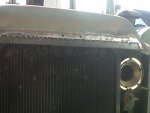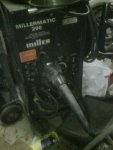Welder Sam
New member
- 1,430
- 6
- 0
- Location
- Glendale, Arizona
Start as cold as itll run smoothly. Make sure the orange glow of the heat fades evenly toward the center of the weld/tack. If its off to one side, it didnt stick on that side. Play with some scrap till ya get it "feeling" right.




